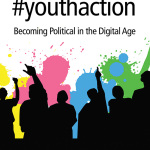The harms from these trends are raising alarms from across the political spectrum. From the right, libertarian political scientist Charles Murray's 2012 book Coming Apart describes how upper class, white Americans have created their own residential enclaves separating them from working class, white Americans. Murray argues that these class divisions threaten the fabric of a unitary nation. On the left, education scholar Gary Orfield has long documented the re-segregation of American schools, and his most recent 2012 report E Pluribus…Separation shows that racial segregation continues to grow and so-called "double segregation," segregation by both minority status and poverty level, also continues to expand, again threatening to create two Americas with two separate and unequal systems of schooling. Of course, people living with other similar people can hold very different beliefs, but the risks of narrow ranges of thought are greater in homogeneous communities.
These divisions between neighborhoods are aggravated by tracking practices within schools. In many schools, whatever diversity remains after residential sorting is further homogenized by assigning students into classes by measures of academic achievement. Since academic achievement is highly correlated with family income, dividing students into basic, college prep, and honors tracks creates situations where, even in demographically diverse schools, students experience classrooms filled with students from similar backgrounds.
Here then, we come to the nub of a critical problem in the civic mission of schools: If we know that meaningful civic education requires having students engage with peers holding diverse perspectives, how can we encourage dialogue across difference in the face of these stark and growing demographic divides? One answer involves creating online spaces where diverse students can convene and learn together.
 This post is excerpted from #youthaction: Becoming Political in the Digital Age, a new ebook published in November 2014. This excerpt comes from chapter 8, "Dialogue Across Difference: A Case Study of Facing History and Ourselves' Digital Media Innovation Network" by Justin Reich, Anna L. Romer, and Dennis Barr. Copyright © 2015 by Information Age Publishing.
This post is excerpted from #youthaction: Becoming Political in the Digital Age, a new ebook published in November 2014. This excerpt comes from chapter 8, "Dialogue Across Difference: A Case Study of Facing History and Ourselves' Digital Media Innovation Network" by Justin Reich, Anna L. Romer, and Dennis Barr. Copyright © 2015 by Information Age Publishing.
Find out more about Facing History’s online resources and professional development.

